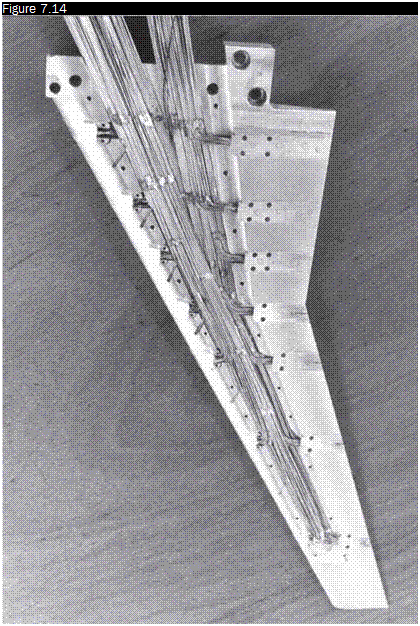Calculating the aerodynamic forces from pressure measurements
Lift, pitching moment and form drag acting on a model can be determined by integrating the measured pressure distribution on the surface.
If the model is 2D (an airfoil) the so-called indirect method could also be used to calculate:
■ profile drag by measuring the losses of stagnation pressure in the wake (conservation of momentum in the direction of the asymptotic velocity);
■ lift, in a wind tunnel with a closed test chamber, by the distribution of pressures on the two walls perpendicular to those supporting the model (conservation of momentum in the direction normal to the direction of the asymptotic velocity).
The friction drag could be calculated by measuring the stagnation pressure near the surface or it could be calculated for 2D models by the difference between profile drag and form drag.
Although the determination of the forces and moments with these methods is often considered only as an alternative to a balance, it should be noted that:
■ pressure measurements provide, besides the resulting forces, a large amount of local information and, while it is possible to integrate the distribution of pressure to obtain the forces, it is not possible, conversely, to derive the distribution of pressures from the forces measured with balances;
■ the determination of the forces from pressure measurements are well suited only for airfoils and 2D bodies of revolution, as in 3D models the measure of pressure becomes cumbersome even in the simplest cases and the data processing is more laborious than for measurements made with balances: an accurate 3D test requires a large number of holes and tubes, in the order of hundreds (Figure 7.14);
■ as has been said, the only possible method for the determination of aerodynamic forces on 2D models is based on pressure measurements;
■ in some cases, the model may be too small to allow a sufficient number of pressure taps to be made on the surface;
■ at supersonic speeds, the method of exploration of the wake may be inaccurate.

A wing model of a Fokker plane with 250 holes and pressure pipes
In each case, what the most appropriate method to be adopted must be evaluated. In the development of a new airplane, pressure measurements, usually combined with flow visualization, are made even when the resultant forces are measured with a balance.











